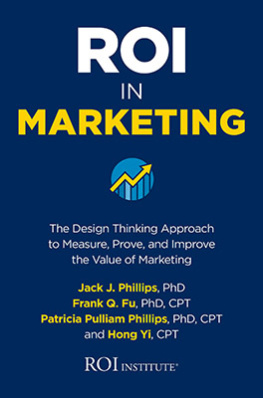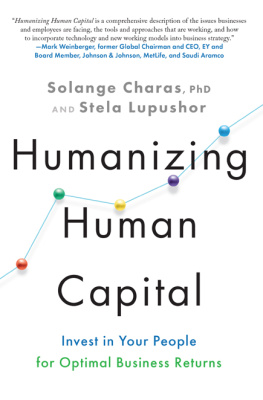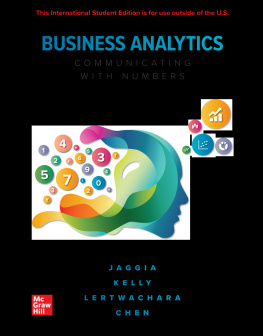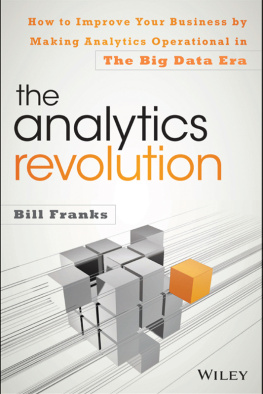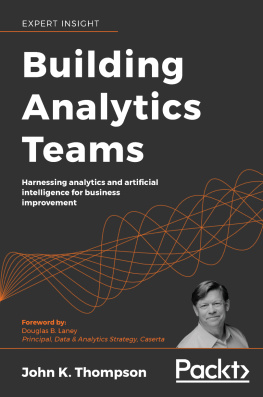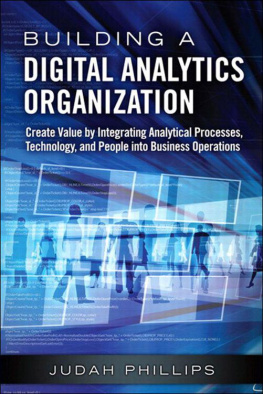Copyright 2015 by Patricia Pulliam Phillips and Jack J. Phillips. All rights reserved. Except as permitted under the United States Copyright Act of 1976, no part of this publication may be reproduced or distributed in any form or by any means, or stored in a database or retrieval system, without the prior written permission of the publisher.
ISBN: 978-0-07-184062-0
MHID: 0-07-184062-1
The material in this eBook also appears in the print version of this title: ISBN: 978-0-07-184020-0, MHID: 0-07-184020-6.
eBook conversion by codeMantra
Version 1.0
All trademarks are trademarks of their respective owners. Rather than put a trademark symbol after every occurrence of a trademarked name, we use names in an editorial fashion only, and to the benefit of the trademark owner, with no intention of infringement of the trademark. Where such designations appear in this book, they have been printed with initial caps.
McGraw-Hill Education eBooks are available at special quantity discounts to use as premiums and sales promotions, or for use in corporate training programs. To contact a representative please visit the Contact Us page at www.mhprofessional.com.
TERMS OF USE
This is a copyrighted work and McGraw-Hill Education and its licensors reserve all rights in and to the work. Use of this work is subject to these terms. Except as permitted under the Copyright Act of 1976 and the right to store and retrieve one copy of the work, you may not decompile, disassemble, reverse engineer, reproduce, modify, create derivative works based upon, transmit, distribute, disseminate, sell, publish or sublicense the work or any part of it without McGraw-Hill Educations prior consent. You may use the work for your own noncommercial and personal use; any other use of the work is strictly prohibited. Your right to use the work may be terminated if you fail to comply with these terms.
THE WORK IS PROVIDED AS IS. McGRAW-HILL EDUCATION AND ITS LICENSORS MAKE NO GUARANTEES OR WARRANTIES AS TO THE ACCURACY, ADEQUACY OR COMPLETENESS OF OR RESULTS TO BE OBTAINED FROM USING THE WORK, INCLUDING ANY INFORMATION THAT CAN BE ACCESSED THROUGH THE WORK VIA HYPERLINK OR OTHERWISE, AND EXPRESSLY DISCLAIM ANY WARRANTY, EXPRESS OR IMPLIED, INCLUDING BUT NOT LIMITED TO IMPLIED WARRANTIES OF MERCHANTABILITY OR FITNESS FOR A PARTICULAR PURPOSE. McGraw-Hill Education and its licensors do not warrant or guarantee that the functions contained in the work will meet your requirements or that its operation will be uninterrupted or error free. Neither McGraw-Hill Education nor its licensors shall be liable to you or anyone else for any inaccuracy, error or omission, regardless of cause, in the work or for any damages resulting therefrom. McGraw-Hill Education has no responsibility for the content of any information accessed through the work. Under no circumstances shall McGraw-Hill Education and/or its licensors be liable for any indirect, incidental, special, punitive, consequential or similar damages that result from the use of or inability to use the work, even if any of them has been advised of the possibility of such damages. This limitation of liability shall apply to any claim or cause whatsoever whether such claim or cause arises in contract, tort or otherwise.
Contents
Dedicated to
Dr. Jac Fitz-enz
The Father of Human Capital Analytics
A professional colleague, mentor, business partner, and personal friend
Preface
SNEAK PREVIEW
Making Human Capital Analytics Work: Measuring the ROI of Human Capital Processes and Outcomes provides useful, practical tools for HR managers and specialists to show the value of HR. Written in an easy-to-understand format, this new book shows how HR managers can apply analytics by developing relationships between variables, predicting the success of HR programs, determining the cost of intangibles that are hard to value, showing the business value of particular HR programs, and calculating and forecasting the ROI of various HR projects and programs. This comprehensive book focuses on three types of analytics: descriptive, predictive, and prescriptive. It also shows how to measure the success of various HR programs with a financial ROI.
Making Human Capital Analytics Work describes how human capital professionals can develop actionable information from data generated through their analytics practice. It will be an indispensable guide for the HR team as they show the value of what they do and their connection to the business. This book is not just about data collection and analysis, but a template to change the mind-set and influence of the team, focusing on results throughout the process. It shows how to use data to drive decisions and build support for the HR function through the use of analytics. In summary, it is a valuable addition to the library of anyone involved in and supporting the HR function and human capital programs.
STATUS OF HR
Although human capital is important to executives, the HR function is not always viewed as a viable contributor to the organization. According to The Economist, the HR budget is often cut more than budgets of other functions during tough economic times. Many would argue, including us, that it should probably be increased during those times; it is those times in which a strategic focus on people can truly make a difference. HR is often the basis of jokes, Dilbert cartoons, and watercooler horror stories. Some view the HR team as a company police force, concerned more with compliance than strategy. According to Jack Welch, the most admired CEO of all time, some of his colleagues see HR as a health and happiness slide show.
In an effort to demonstrate its importance, HR often focuses on transactional activities such as benefits administration and compliance investigations. However, the transactional parts of HR are being (or have been) automated, outsourced, or transferred to other parts of the organization. With this shift, HR becomes principally administrative, focusing on developing, revising, and administering policy. This administrative focus can cause many organizations to dismiss HR altogether. For example, J. Craig Mundy suggests that HR no longer needs to be a function in an organization but rather it should be a part of every managers job.
Although this scenario appears dismal, on the bright side, showing and proving the value of the HR function can have significant implications. Organizations cited as most admired and the best places to work reach this status, in part, because of top executive support of HR. This support occurs when HR demonstrates business value. Research continues to show that investment in HR programs often correlates with increased productivity, profitability, customer satisfaction, and even share price for publicly traded companies. So value in HR exists. The question is: How can HR demonstrate value in terms that resonate with key executives and influence their decision making?
WHATS NEEDED
HR executives, managers, and specialists need a set of tools to show how to connect HR to the business, how to predict the value of HR projects and programs, and how to optimize the value of human capital. On a practical basis, HR executives need to know how to place monetary value on the hard-to-value measures, such as employee engagement, job satisfaction, conflict, stress, and teamwork. In addition, it is helpful to understand relationships between different variables, taking the mystery out of what is causing low productivity, inadequate quality, delayed processes, and excessive costs. Sometimes a need to predict outcomes (e.g., which employees are most likely to stay with an organization, which ones have high potential, which ones are prone to accidents) is evident. Finally, the business value, including the financial ROI, of HR programs needs to be shown in a practical, rational way using that data to optimize the contribution of the HR function.

